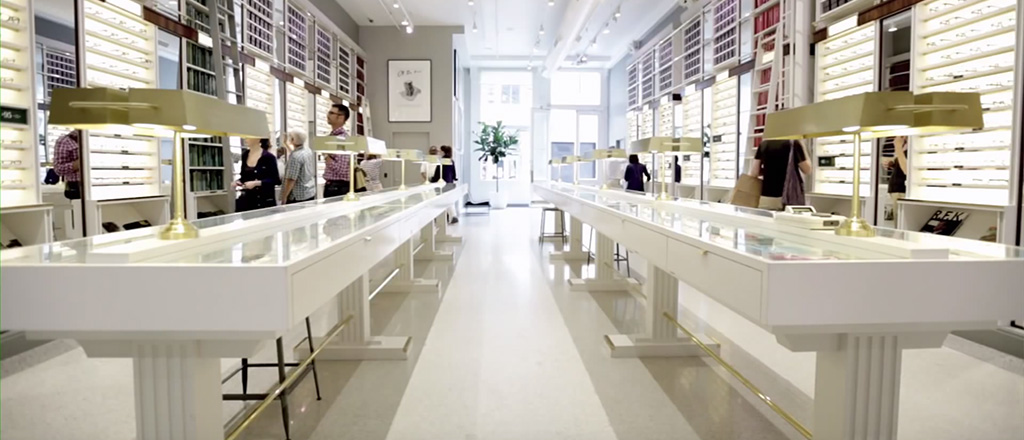MARKETING

The big retail shakeout of 2017 is battering traditional chains of all stripes: Payless has filed for bankruptcy and is closing about 400 stores; Michael Kors, Ann Taylor, Abercrombie & Fitch, Guess, The Limited and Staples are all shutting locations; and department stores ranging from Sears to Macy’s and J.C. Penney are pulling the plug on many of their establishments as well.
Critics are quick to blame the shift to digital technology for this bloodbath, and that is part of it. But executives from three digital disruptors point to a much more fundamental problem: Legacy retailers have lost their focus on the customer. And as the consumer’s expectations have changed, they did not adapt quickly to meet them — opening the door to their digital rivals.
Take eyeglass e-tailer Warby Parker. The founders started the business in 2010 after realizing that two European conglomerates controlled the spectacles market worldwide, driving prices way up. “We thought it didn’t make sense for a pair of glasses to cost as much as an iPhone,” said co-CEO Neil Blumenthal, at the Consumer Response to the Evolving Retailing Landscape conference hosted by Wharton’s Baker Retailing Center.
Warby Parker decided to manufacture its own eyeglasses and sell directly to consumers online and through bricks-and-mortar stores. By cutting out the middleman, it could price prescription glasses for as little as $95 a pair. To make life easier for online customers, it offered free shipping and free returns and let folks try on five pairs of glasses at home for five days. If people need prescriptions, the company uses telemedicine to deliver it — folks download an app and pair it with a second screen like a laptop for a vision test. An eye doctor reviews the results and if all is well, signs the prescription. Customers can also get their eyes checked at Warby Parker stores, where optometrists are on staff.
Inside its stores, Warby Parker displays glasses in the open at eye level and offers full-length mirrors to folks trying on frames. It’s a more customer-friendly approach compared to the typical optical shop, where glasses are sometimes under lock and key and small vanity mirrors are the norm. Making these little changes greatly improves the shopping experience for customers, yet the industry has not made them, Blumenthal noted. “This isn’t rocket science,” Blumenthal said. “But for whatever reason, the industry wasn’t … figuring out simple, better ways to display and sell glasses even in the store.”
“Every experience, whether it is our website or Instagram … or packaging, it’s all about our conversation.”–Jessica White
Jessica White, executive director of customer at beauty products and lifestyle startup Glossier, said the company focuses on encouraging digital conversations among the community of people who use its products, whether on its website, on social media or in its showroom. This approach makes sense since the business grew out of the Into the Gloss blog by former Vogue editor Emily Weiss. She found out that women love to talk about beauty and the blog’s 1.5 million monthly readers are constantly writing and commenting about what they’re doing.
To preserve the zeitgeist of the blog, Glossier avoids making a hard sell of its beauty products, unlike many legacy retailers. For example, “our Instagram looks like our customers’ Instagram. It doesn’t look like a brand talking to a customer. It looks like what a customer’s Instagram would actually look like,” White said at the Wharton retail conference. This subtle shift in marketing strategy makes Glossier stand out. “Every experience, whether it is our website or Instagram … or packaging, it’s all about our conversation,” she added.
It’s All About the Customer
Warby Parker also focuses obsessively on pleasing the customer. “We measure our net promoter score religiously,” Blumenthal said. This score measures a customer’s willingness to recommend a company’s products or services to others. It ranges from 100 all the way down to below zero. He said Warby Parker has scored in the 80s since inception while rivals are in the 20s and 30s or even single digits. A big advantage of being vertically integrated — controlling everything from the manufacturing to retail sales — is that “we are able to get data and insight directly from the customer and immediately act on it,” he said.
For example, Warby Parker had offered ‘virtual try-ons,’ where glasses are superimposed on customers’ faces online. But the company discovered that it actually decreased sales because the technology wasn’t up to snuff. Then it noticed that people were walking into stores with a paper list of frames they wanted to try on — so that led to the creation of customer ‘favorites’ and digital lists on its website. And if customers tried on frames in a store but left without buying, they are emailed photos of themselves wearing different glasses to send to friends and family for feedback. That’s because buying glasses is a social activity.
Warby Parker also strives to make the buying experience fun. “How do we create as big of a branded experience as possible?” said Blumenthal. For store décor, the retailer pays homage to its literary heritage — sporting terrazzo floors, library lamps and shelves that look like book stacks. The company’s name comes from two Jack Kerouac characters: Warby Pepper and Zagg Parker. Its first fashion event was at the New York Public Library.
“This isn’t rocket science. But for whatever reason, the industry wasn’t … figuring out simple, better ways to display and sell glasses even in the store.”–Neil Blumenthal
By focusing on what the customer wants, Warby Parker’s sales have boomed. When the company first launched, it hit its first-year sales target in three weeks and sold out the top 15 styles in four weeks, with a waiting list of more than 20,000 people. “The company took off like a rocket ship,” Blumenthal said. Warby Parker is currently valued at $1.2 billion after its last funding round. It has raised $215 million in five rounds, according to Crunchbase. The retailer is on the path to opening “a couple of hundred stores” from the current 52, he said.
Can Legacy Retailers Pivot?
Legacy retailers have been trying to adapt to the new digital landscape, with mixed success. White believes they can pivot, but “it’s hard. The reason it’s hard is not because what we’re doing is … rocket science. It’s that the way we were founded was with our customer at the core and with a channel agnostic approach to retail.” Here’s another big difference: “We don’t even care if you transact [or not], we just want to talk with you,” she said.
Rachel Shechtman, CEO of Story, helps legacy brands tell their stories through carefully curated experiences at the company’s New York City showroom. “I describe it as a space that has the point of view of a magazine … and we sell things like a store,” she said at the conference. Last year, Story promoted the new season of USA Network’s “Mr. Robot,” a TV show about a rebel programmer. It created a gritty, underground look for the showroom complete with graffiti, gadgets and arcade machines. There was also an ATM machine that spit out money to folks who could hack it. People could buy goods there as well, such as actor Christian Slater’s jacket. The whole idea was to build buzz and excitement around the show.
“Why aren’t brands accessing those environments and retailers monetizing potential revenue from brands?”–Rachel Shechtman
Shechtman said her company has staged 37 stories thus far and clients have included Cigna, GE, HP, American Express and Pepsi. She believes that a company’s customers should be seen as a valuable audience as well. For example, Starbucks gets millions of people going through its stores. “That to me is a media channel,” she said. “That’s not just a customer; that’s an audience. So why aren’t brands accessing those environments and retailers monetizing potential revenue from brands?”
Creating a fun experience is important, but Blumenthal cautions against deployment of digital technology for its own sake. “There’s a lot of gimmicks out there,” he said. “Companies are trying to leapfrog to create solutions where there are no problems.” For example, some retailers install “magic mirrors” where shoppers can try on a jacket and see it in different colors by pressing buttons on a tablet. “Unless that’s a real customer pain point, I don’t know if that makes sense,” he said. “A lot of retailers aren’t thinking holistically about the problem they are trying to solve and what are some of the basic requirements to solve that problem.”
Instead of tech gimmicks, a better way to improve a customer’s experience would be to implement processes that address actual grievances — such as reducing transaction times, making it easier to return or exchange a product or speeding up shipping. “Everybody gravitates towards the sexy and forgets the nuts and bolts of the customer experience,” Blumenthal said.
The bottom line is that traditional retailers have big changes to make to adapt to this new digital reality. And it won’t be painless. “It will require reorganization and refocusing of budgets toward innovation,” White said. “It will take time — and it will weed out a lot of companies unable to get on the bandwagon.”








